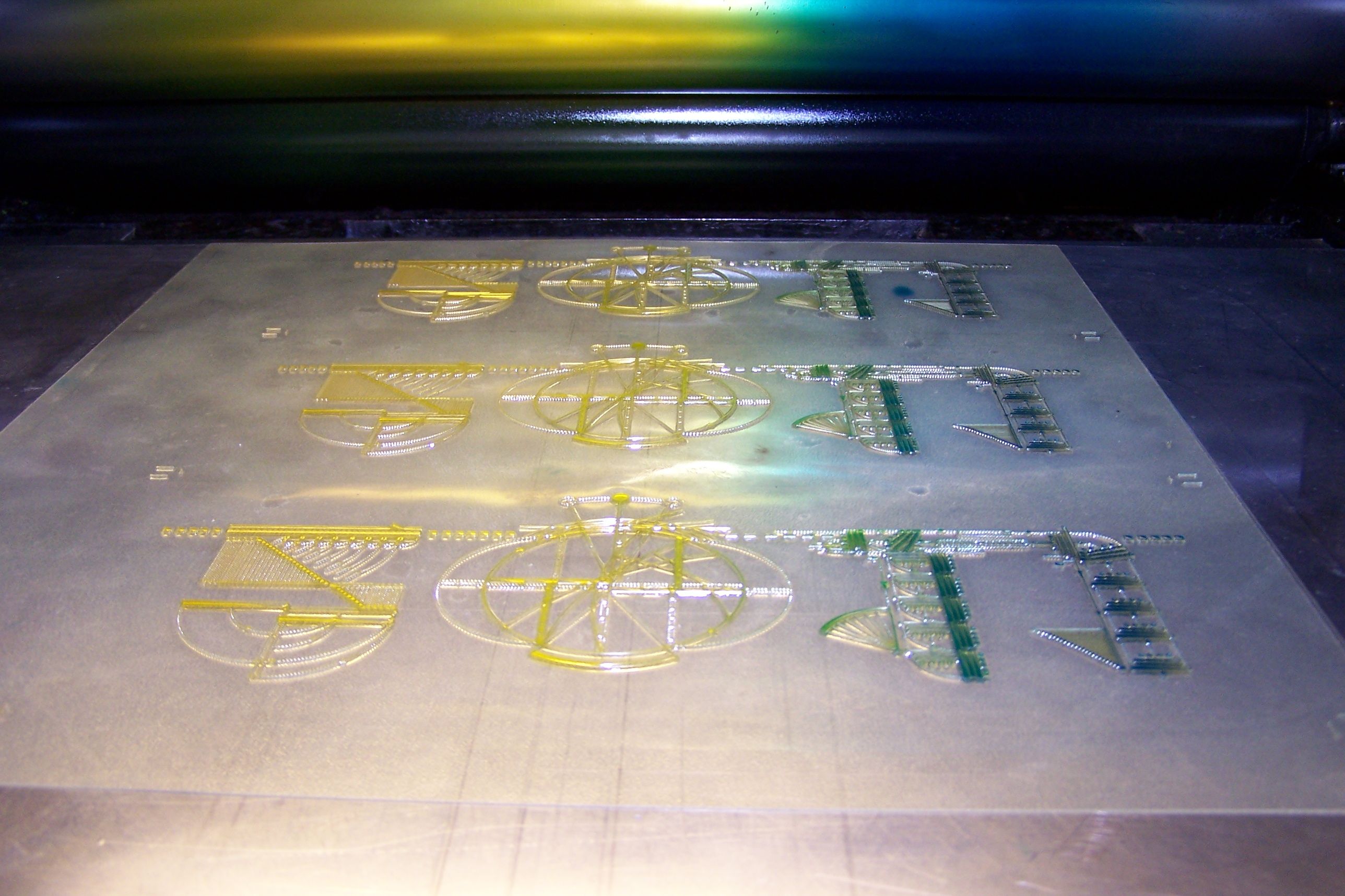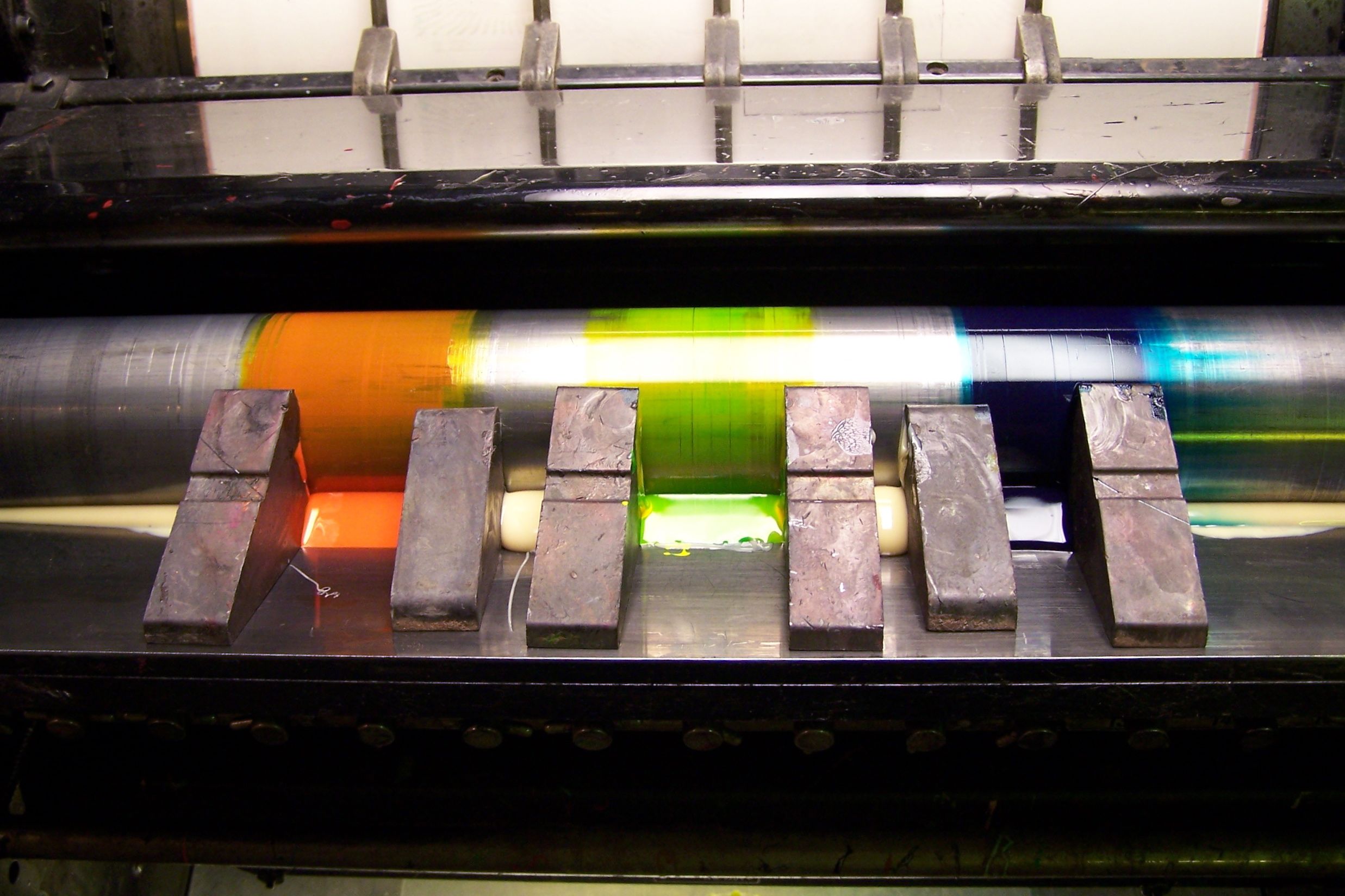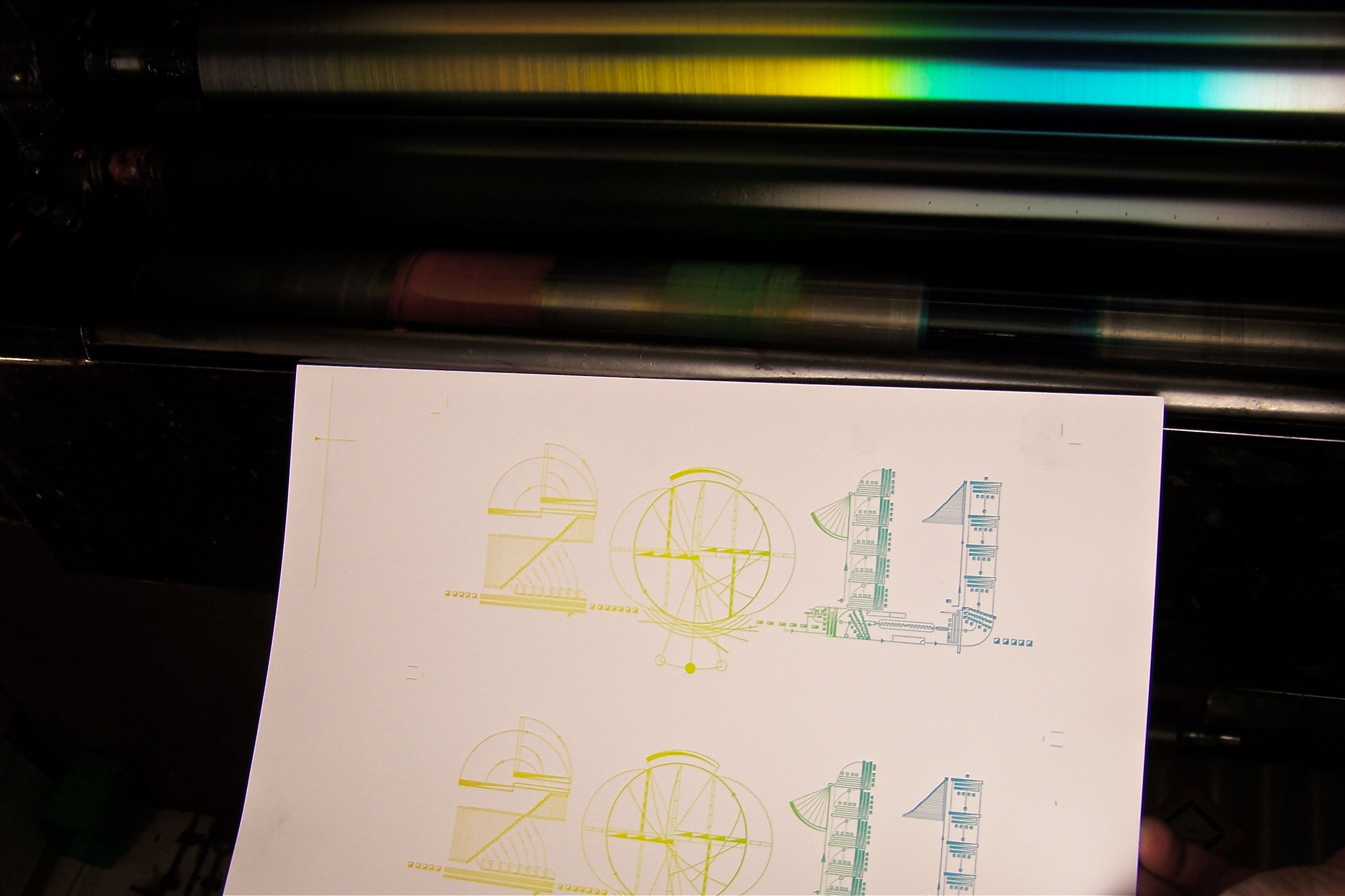I also use a triple-beam balance scale, and use the gram measurements offered on the right side of each swatch in the Pantone Solid Uncoated swatchbook.
Here’s a little conversion guide I use when mixing ink; I convert ounces to grams for the most accuracy:
- 1 oz = 28.57 g (rarely use unless I’m printing in the thousands, or want to mix enough for future runs)
- 3/4 oz = 21.427 g (used for longer print runs, when I print from the fountain/heavier coverage)
- 1/2 oz = 14.29 g
- 1/4 oz = 7.145 g (use this the most, for lighter coverage, shorter runs, such as wedding invites)
How does this work, you ask? Say you want to mix 1/4 oz (or 7.145 g) of Pantone 151 U (orange). Here are the color components, taken from the Pantone Solid Uncoated guide:
- Yellow = 75.0
- Warm Red = 25.0
First, you take the gram measurements and move the decimal point two places to the left (.75 and .25, respectively).
Then, multiply each value by the total amount of ink needed (7.145):
- Yellow = .75 x 7.145 = 5.359 g
- Warm Red = .25 x 7.145 = 1.786 g
A good way to double-check your math is to add the gram components up, they should add up to 7.145:5.359 + 1.786 = 7.145 g
Hope you find this handy!
Lars.


